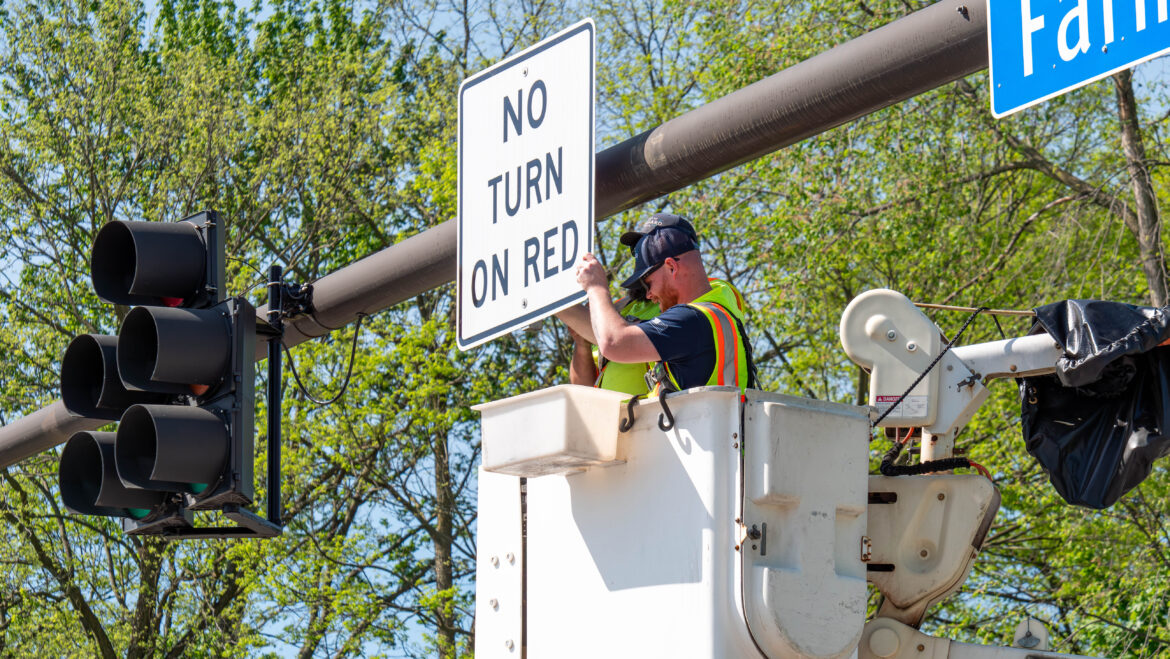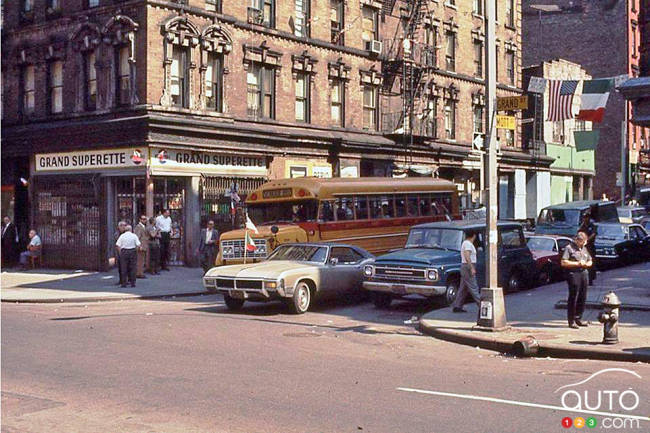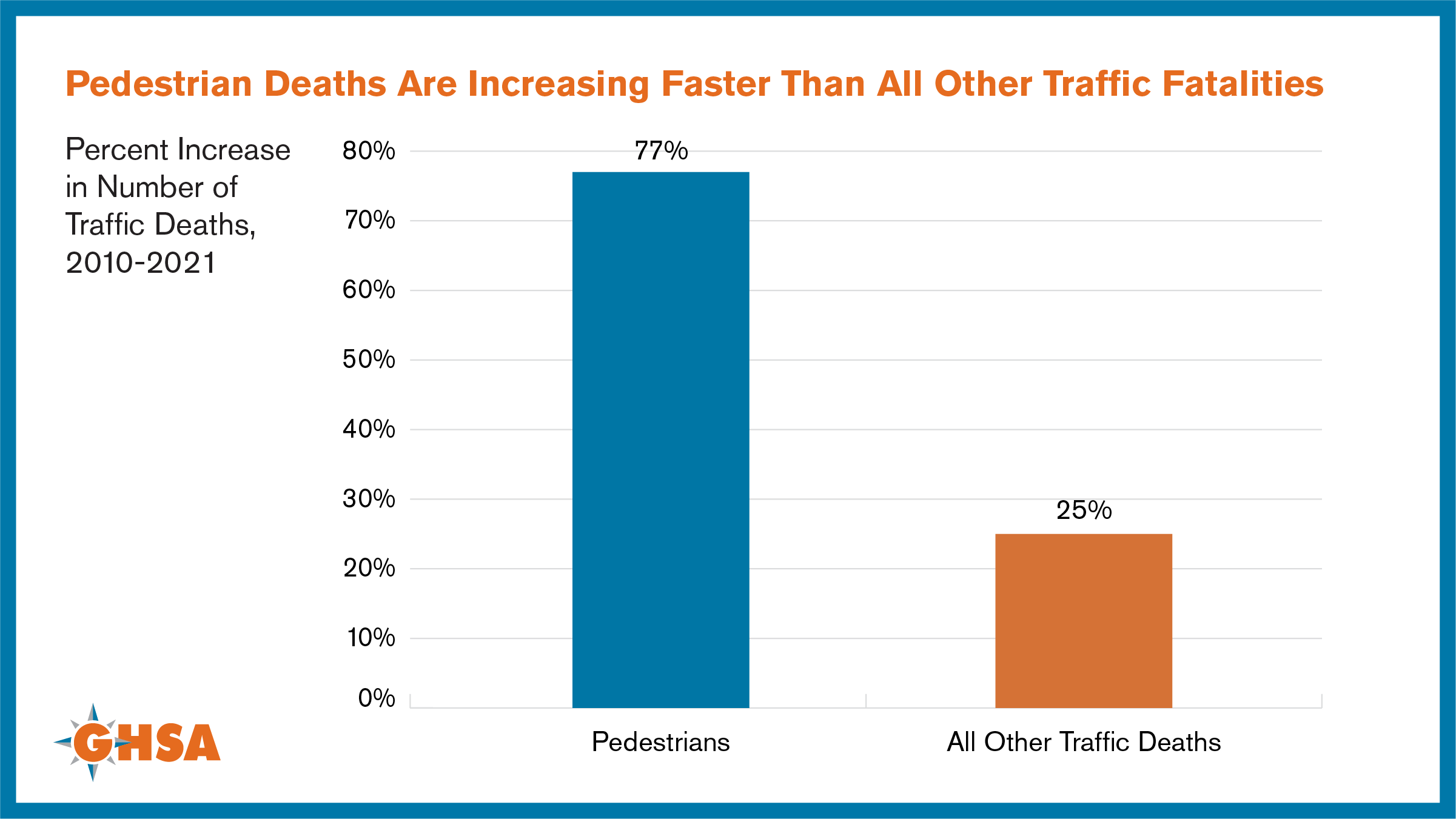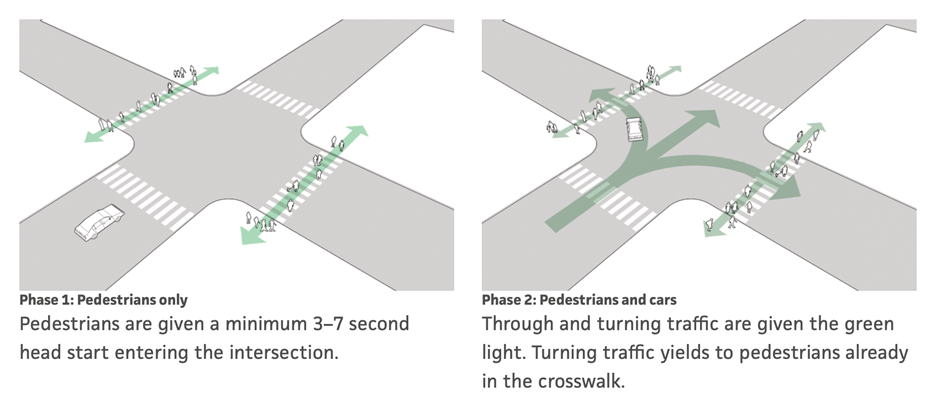
In the mid 1970s, the oil embargo made the price of gas soar and gas rationing went into effect. Long lines of cars at the gas station became a common sight.
As the average fuel economy of cars at the time was only 11.9 mpg, states started encouraging right turn on red to reduce idling at intersections and thereby save some small amounts of gas. In 1975, Congress adopted a provision in the Energy Policy and Conservation Act, mandating that states allow right-on-red “to the maximum extent practicable consistent with safety” to be able to qualify for federal energy grants. Right turn on red became the law of the land. The United States is still one of the few countries in the world to allow it.

Pedestrian Deaths are Increasing Faster than all other Traffic Fatalities. (Click on image for larger view.)
Fast forward to today. Average fuel economy is 26 mpg for all vehicles, and NHTSA (National Highway Traffic Safety Administration) has set average fuel economy for new cars to 50 mpg by 2031. Pedestrian and cyclist fatalities have soared to the highest level they have ever been across the country – higher than anyone could have imagined. California is the leader in this dubious honor, with a pedestrian fatality rate almost 25% higher than the national average, and the highest number of pedestrian deaths of any state in the country. Times have clearly changed.
While there are many reasons for this increase in pedestrian deaths, one low-cost and effective solution is to implement No Turn on Red at key intersections. A study by the city of Indianapolis found that over a five-year period, about 57% of car crashes involving pedestrians happened because drivers failed to yield to pedestrians in an intersection. In the report on the implementation of No Turn on Red in the Tenderloin, the SFMTA reported that “In San Francisco, turn on red crashes account for less than 1% of all injury crashes, but 20% of pedestrian or bicycle related injury crashes involving turning drivers at signalized intersections.”
A study by the city of Indianapolis found that over a five-year period, about 57% of car crashes involving pedestrians happened because drivers failed to yield to pedestrians in an intersection.
Many cities looking for ways to reduce these deaths have implemented No Turn on Red at busy intersections including Atlanta, Denver, Raleigh, Seattle, Indianapolis, Washington, D.C., Alexandria, and more. Based on the results of the No Turn on Red program in the Tenderloin, in March 2024, San Francisco approved expanding the program to approximately 200 intersections in the City’s downtown North of Market and South of Market core areas. In Seattle, No Turn on Red is now the default for new and upgraded traffic signals and many older intersections are being retrofitted.
No Turn on Red intersections in San Francisco and Seattle. (click on image for larger view.)
What is No Turn on Red?
Drivers preparing to turn right at an intersection will look to the left to check for oncoming traffic. As a result, they can often miss the pedestrians or cyclists who are standing to their right, resulting in injuries and fatalities.
A No Turn on Red sign indicates that drivers need to wait until the light turns green before they can turn right at the intersection. At busy intersections, the sign might apply all day. At other intersections, like near schools, it might be limited to certain hours. Some cities are experimenting with LED signs to make them more visible. Others like Alexandria, VA are experimenting with combining No Turn on Red with Leading Pedestrian Indicators which give pedestrians the green light to cross the street a few seconds before cars are given the green light to turn. This ensures that pedestrians are more visible to the cars as they begin to turn.
No Turn on Red intersections by themselves will not solve the problem of rising pedestrian deaths. They are just one of the solutions in the toolbox to make our city safer for pedestrians and cyclists. Other effective measures include building sidewalks on major streets, reducing car speeds, increasing the number of crosswalks, and adding pedestrian refuge islands. These are all options that Cupertino is considering as it continues to become a more cyclist and pedestrian-friendly city.



